Don’t Quit
 Getting out of shape didn’t happen overnight. It may have taken years to gain weight or lose muscle strength. It’s too easy to get discouraged and think there’s no hope if it looks like too much to handle. The key is to keep trying. Don’t quit! Your life depends on it. A few false starts doesn’t mean you should quit. Just pick up where you stumbled. Binging on unhealthy food one day doesn’t mean you have to throw away all healthy eating.
Getting out of shape didn’t happen overnight. It may have taken years to gain weight or lose muscle strength. It’s too easy to get discouraged and think there’s no hope if it looks like too much to handle. The key is to keep trying. Don’t quit! Your life depends on it. A few false starts doesn’t mean you should quit. Just pick up where you stumbled. Binging on unhealthy food one day doesn’t mean you have to throw away all healthy eating.
Workouts can be tough, but you can do them.
When you workout with a personal trainer, you’re never asked to do anything that’s beyond your capability. It definitely will be tough, but before long, you’ll be able to do it. You just have to keep trying. Once you accomplish that first goal, you’ll realize that you’re capable of doing anything you set your mind to doing. It will not only start to become easier, it will start to become exciting and even fun.
Eating healthy doesn’t have to mean giving up your favorite foods.
People often feel that if they eat healthy, they have to give up everything they love to eat. That’s just not true. What it does mean is that you start eating more healthy food and smaller, more infrequent portions of food you love. Don’t quit because you didn’t stop at a small serving of a favorite that doesn’t fit in the healthy list. Even the healthiest eater sometimes eats cake and all the goodies. Just go back to healthy eating the next day.
Healthy food can taste good.
Healthy food doesn’t have to taste like cardboard. In fact, there are hundreds of healthy dishes that are absolutely delicious. I had a client that gave up sugary treats and candy for an extended period. She began to notice how sweet other food was, like apples. She even noticed that there was a sweet taste to the crab Rangoon she ate and tasted the sugar in other foods in restaurants. Her taste buds had reset and she truly started tasting food. Don’t give up until you get the enjoyment of truly tasting what real food tastes like.
- Don’t be discouraged by others in your effort to get healthier and fit. Sometimes people sabotage your efforts because they worry it will change your relationship with them.
- Don’t give up if you ache after working out. It’s a good sore feeling.
- Don’t give up if you get tired when you first start. Exercise does help improve sleep and you’ll understand how when you first start out. It won’t belong before you find you have twice as much energy as you did before you started.
- Don’t give up because you think you’re too busy to workout or eat healthy. It boosts your energy and helps you think better, plus burns off stress and keeps you healthier so you aren’t spending time at the doctor.
 13609 Central Ave, Ste E Chino, CA 91710
13609 Central Ave, Ste E Chino, CA 91710



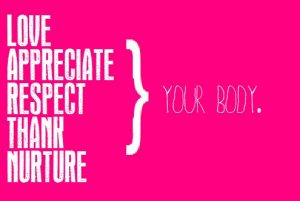 If you live in Chino Hills, you might feel awkward being out in public if you hate how you look. You need to become comfortable in your own skin even before you start working out. How you look isn’t who you are, but how you feel about yourself may determine whether you take care of yourself and look better. One of the problems I’ve found with many very overweight clients is that they don’t think they deserve to look better and feel good.
If you live in Chino Hills, you might feel awkward being out in public if you hate how you look. You need to become comfortable in your own skin even before you start working out. How you look isn’t who you are, but how you feel about yourself may determine whether you take care of yourself and look better. One of the problems I’ve found with many very overweight clients is that they don’t think they deserve to look better and feel good.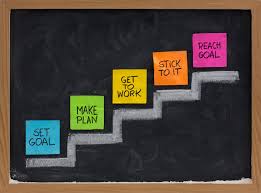
 When you come to the gym in China Hills, CA, you’ll be asked about your ultimate fitness goals. Those aren’t the goals you’ll be working on each week or month, although in reality they are when you work on weekly goals that lead to achieving them. You see, ultimate fitness goals are the goals you want to achieve after working out for quite a while. They might be goals to shed 100 pounds or more or to compete in an Iron Man competition. For most people, they aren’t goals that are accomplished in a week, a month or sometimes even in a year.
When you come to the gym in China Hills, CA, you’ll be asked about your ultimate fitness goals. Those aren’t the goals you’ll be working on each week or month, although in reality they are when you work on weekly goals that lead to achieving them. You see, ultimate fitness goals are the goals you want to achieve after working out for quite a while. They might be goals to shed 100 pounds or more or to compete in an Iron Man competition. For most people, they aren’t goals that are accomplished in a week, a month or sometimes even in a year.
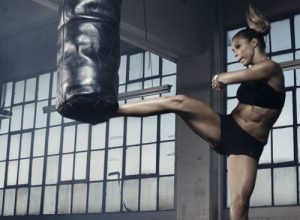 Two areas of fitness that aren’t give the respect they deserve are balance and flexibility. Sure you admire it in the gymnast or dancer, but when you go for a workout, unless it’s yoga, more focus is on strength and endurance. You may get questions on how far you ran and how fast or impress people with the amount of weight you can lift, but nobody asks how your range of motion is. Flexibility and balance are both important. Kickboxing for flexibility and balance training is exceptional.
Two areas of fitness that aren’t give the respect they deserve are balance and flexibility. Sure you admire it in the gymnast or dancer, but when you go for a workout, unless it’s yoga, more focus is on strength and endurance. You may get questions on how far you ran and how fast or impress people with the amount of weight you can lift, but nobody asks how your range of motion is. Flexibility and balance are both important. Kickboxing for flexibility and balance training is exceptional.
 There’s a lot of ways to relieve stress, running is one of those ways. Here in the gym in Chino Hills, CA, we use kickboxing and other types of workouts to do it. That doesn’t mean either way is right or wrong, they just both approach the fight or flight response differently. The fight or flight response is what your body experiences when you’re under stress. As you can tell, kickboxing is the perfect fight option and running is a great flight option.
There’s a lot of ways to relieve stress, running is one of those ways. Here in the gym in Chino Hills, CA, we use kickboxing and other types of workouts to do it. That doesn’t mean either way is right or wrong, they just both approach the fight or flight response differently. The fight or flight response is what your body experiences when you’re under stress. As you can tell, kickboxing is the perfect fight option and running is a great flight option.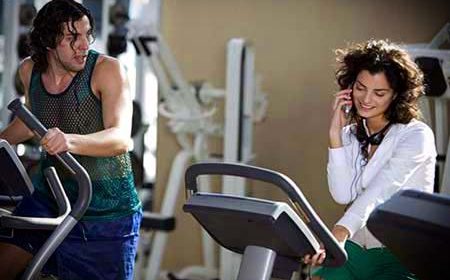
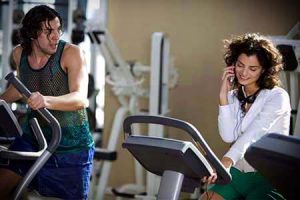 For those that find it tough to make it to the gym three times a week, the question whether you can workout too much might seem ridiculous. It’s not. There are people that do tough workouts every day for long hours, hoping to achieve their goals more quickly. The problem is, they often find they’re not only, not achieving their goals, they’re losing ground. Yes, you can definitely workout too much and there are signs that let you know this is occurring.
For those that find it tough to make it to the gym three times a week, the question whether you can workout too much might seem ridiculous. It’s not. There are people that do tough workouts every day for long hours, hoping to achieve their goals more quickly. The problem is, they often find they’re not only, not achieving their goals, they’re losing ground. Yes, you can definitely workout too much and there are signs that let you know this is occurring.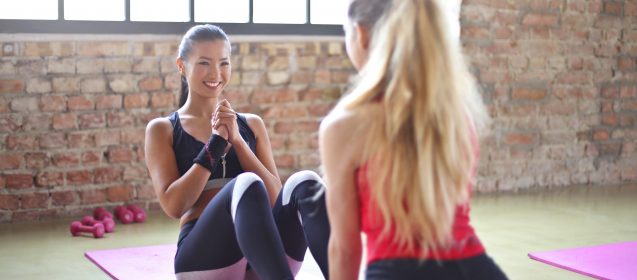
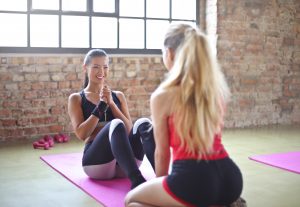 One of the things I always tell new members at the gym in Chino Hills, CA is to bring a friend. While you might not workout with them directly, there are benefits of a workout partner or someone who works out at the same time as you do. They turn an ordinary gym visit into an appointment with a friend. You tend to go out of your way to make that appointment, where you might find it easier to skip a gym visit where nobody misses you.
One of the things I always tell new members at the gym in Chino Hills, CA is to bring a friend. While you might not workout with them directly, there are benefits of a workout partner or someone who works out at the same time as you do. They turn an ordinary gym visit into an appointment with a friend. You tend to go out of your way to make that appointment, where you might find it easier to skip a gym visit where nobody misses you.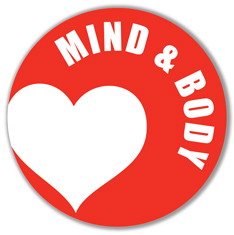
 A truly happy person leads a healthy life, balancing mental and physical health. When a person’s mental condition is centered and happy, that person tends to have better health. If someone is fit, they tend to be happier. The body and mind work together to complement each other, with one directly affecting the other. Even the very term disease, indicates the connection between the two. It’s the prefix dis, meaning not and the word ease. Together, they mean not at ease, which could take on the meaning of being mentally uncomfortable, but more commonly means illness.
A truly happy person leads a healthy life, balancing mental and physical health. When a person’s mental condition is centered and happy, that person tends to have better health. If someone is fit, they tend to be happier. The body and mind work together to complement each other, with one directly affecting the other. Even the very term disease, indicates the connection between the two. It’s the prefix dis, meaning not and the word ease. Together, they mean not at ease, which could take on the meaning of being mentally uncomfortable, but more commonly means illness.
 Finding the best workouts for biceps is a quest that many people pursue. Having big guns is the sign that you’ve worked out. While women won’t develop the massive muscles men do, they’ll get a sleek, strong look that is perfect for short sleeve tops. I’ll just list a few that I find effective for the upper arm. One works the biceps brachii, the muscle at the front of the arm located between the shoulder and elbow. One works the brachialis, located at the bottom of the upper arm, connecting the bottom of the bicep to the forearm. The last one works both areas.
Finding the best workouts for biceps is a quest that many people pursue. Having big guns is the sign that you’ve worked out. While women won’t develop the massive muscles men do, they’ll get a sleek, strong look that is perfect for short sleeve tops. I’ll just list a few that I find effective for the upper arm. One works the biceps brachii, the muscle at the front of the arm located between the shoulder and elbow. One works the brachialis, located at the bottom of the upper arm, connecting the bottom of the bicep to the forearm. The last one works both areas.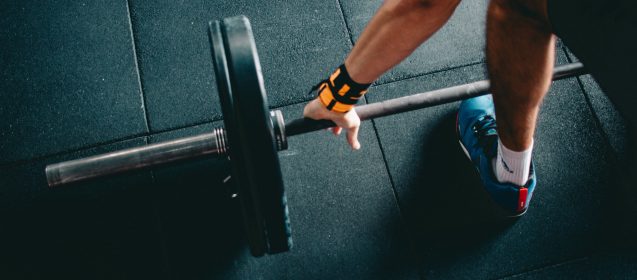
 While weight training once a week is acceptable, doing strength training twice a week is better. Strength training doesn’t always require the use of weights. In fact, bodyweight exercises and resistance bands are two good examples of strength training that requires no weights. In our gym in Chino Hills, CA, many students use kickboxing, plus other strength training techniques to get the maximum benefit from strength training, while enjoying a fun, yet fitness oriented outlet.
While weight training once a week is acceptable, doing strength training twice a week is better. Strength training doesn’t always require the use of weights. In fact, bodyweight exercises and resistance bands are two good examples of strength training that requires no weights. In our gym in Chino Hills, CA, many students use kickboxing, plus other strength training techniques to get the maximum benefit from strength training, while enjoying a fun, yet fitness oriented outlet.